Photos: NASA's MAVEN Mission to Mars
First Images of Mars Atmosphere by NASA's MAVEN Probe

NASA's Mars Atmosphere and Volatile ENvironment spacecraft, or MAVEN, will study the atmosphere of Mars like never before to understand how the Red Planet transformed from a wet world to the dusty, hostile place we see today. The mission launched in November 2013 and arrived in orbit around Mars on Sept. 21, 2014. See photos from the mission in this Space.com gallery. HERE: These images are the first views of Mars beamed to Earth by NASA's new MAVEN orbiter. They show the planet's upper atmosphere in different wavelengths to analyze its composition. NASA released the images on Sept. 24, 2014. They were captured about eight hours after MAVEN arrived in orbit around Mars on Sept. 21. Read the Full Story.
Artist's Rendition of MAVEN at Mars
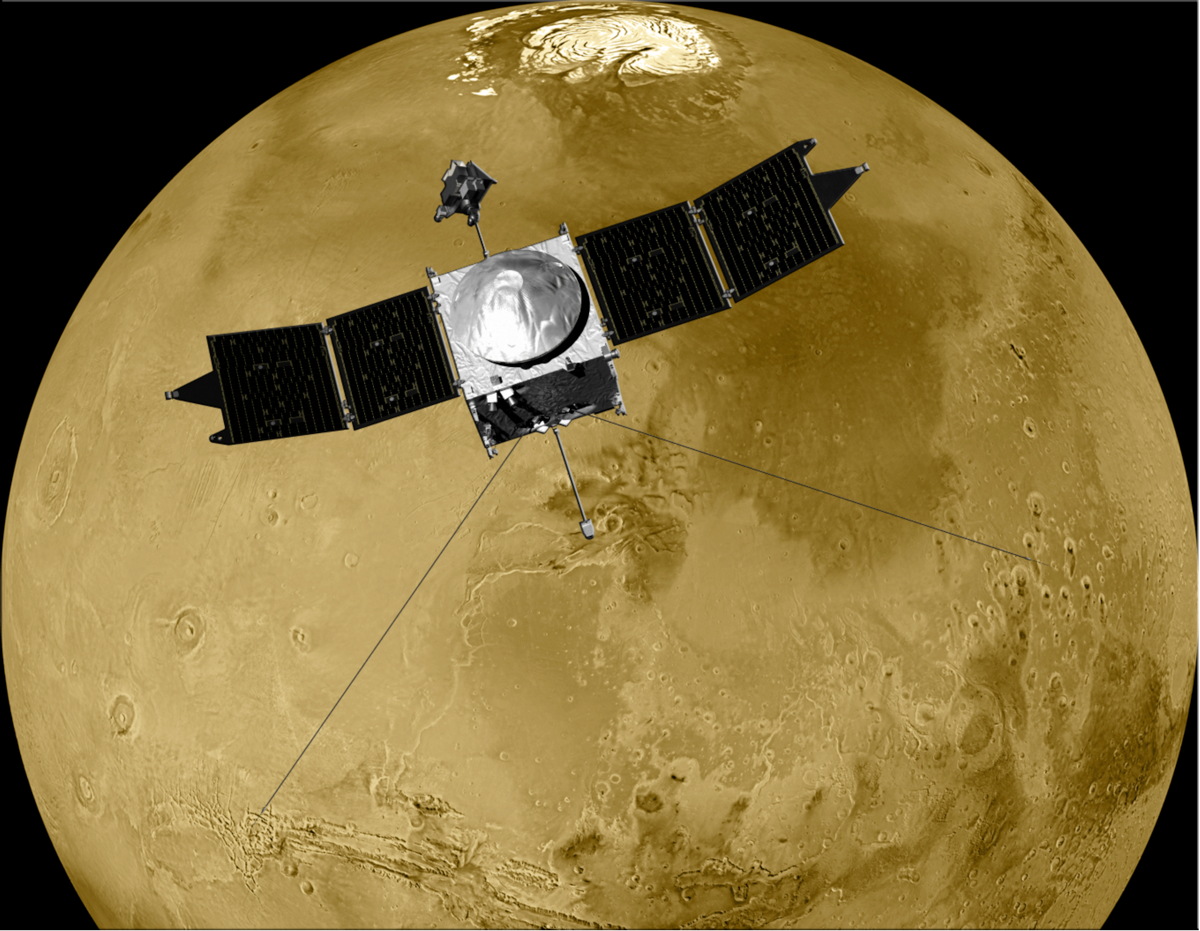
This artist’s rendition depicts MAVEN spacecraft in orbit around Mars, with all of its booms extended and instruments activated. The space vehicle measures 37 feet (11.2 meters) in length from tip to tip of the solar panels and extensions.
MAVEN's Orbit Around Mars

MAVEN's orbit after first arrival at Mars and its current orbit after carrying out four maneuvers appear in this diagram.
Hydrogen in the Upper Atmosphere of Mars

Atomic hydrogen scattering ultraviolet sunlight in the upper atmosphere of Mars appears in this image, created with data obtained by MAVEN’s Imaging Ultraviolet Spectrograph.
Carbon in the Upper Atmosphere of Mars,
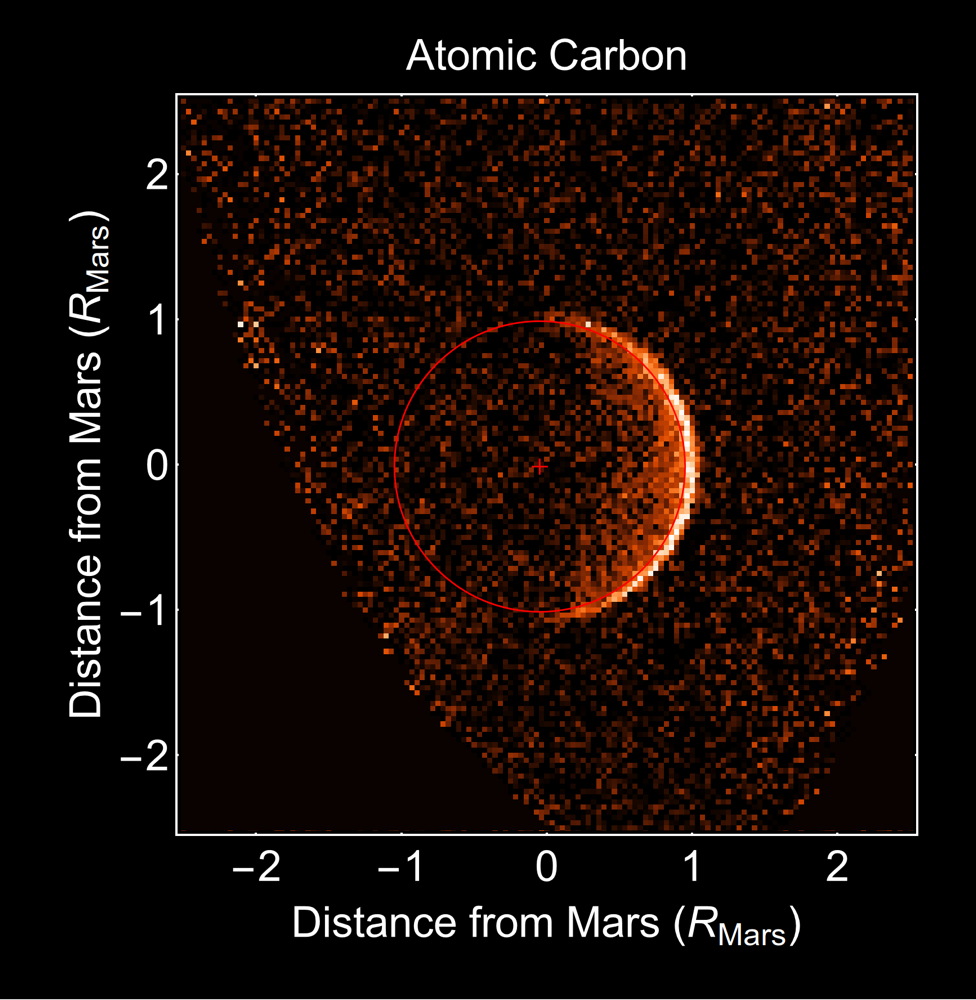
Atomic carbon scatters ultraviolet sunlight in the upper atmosphere of Mars as seen in this image, created using data obtained by MAVEN’s Imaging Ultraviolet Spectrograph. A red circle indicates Mars. Sunlight illuminates the planet from the right.
Oxygen in the Upper Atmosphere of Mars,
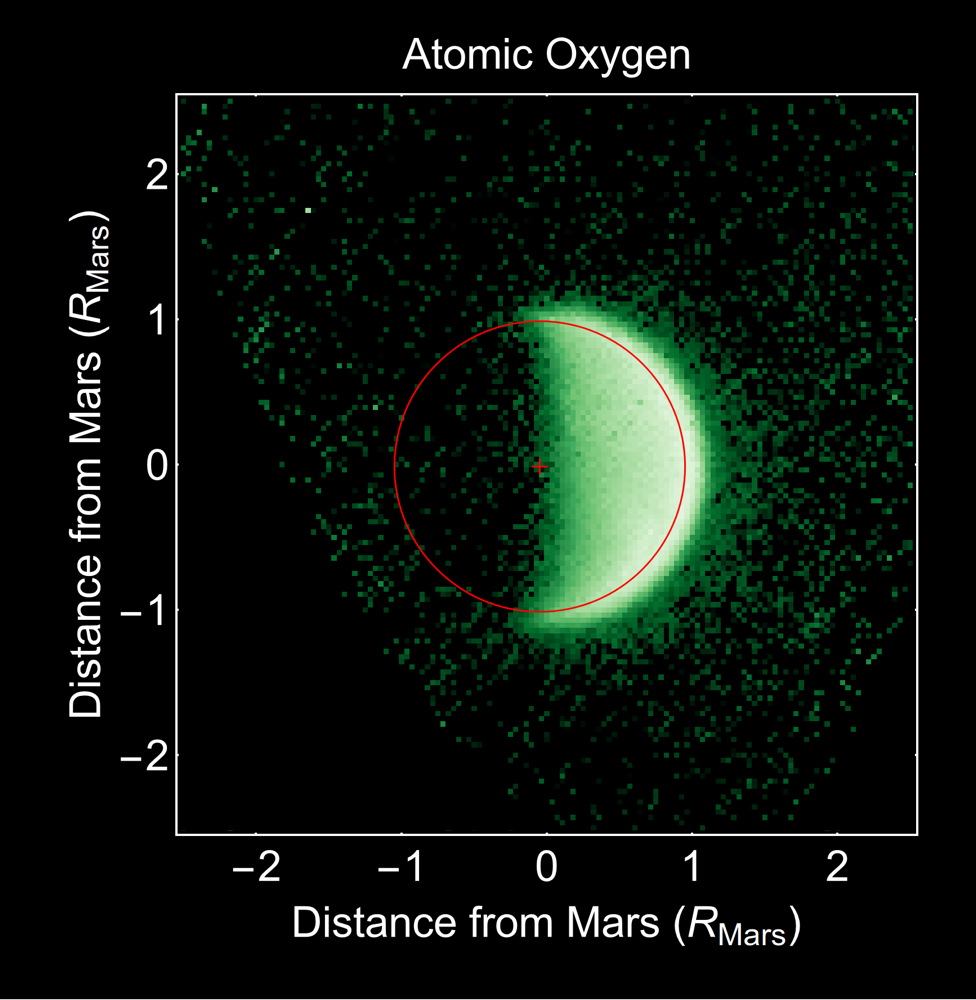
Atomic oxygen scatters ultraviolet sunlight in the upper atmosphere of Mars, as seen in this image, created using data obtained by MAVEN’s Imaging Ultraviolet Spectrograph. Most oxygen appears trapped near the planet, marked by the red circle.
Three Views of Mars' Escaping Atmosphere
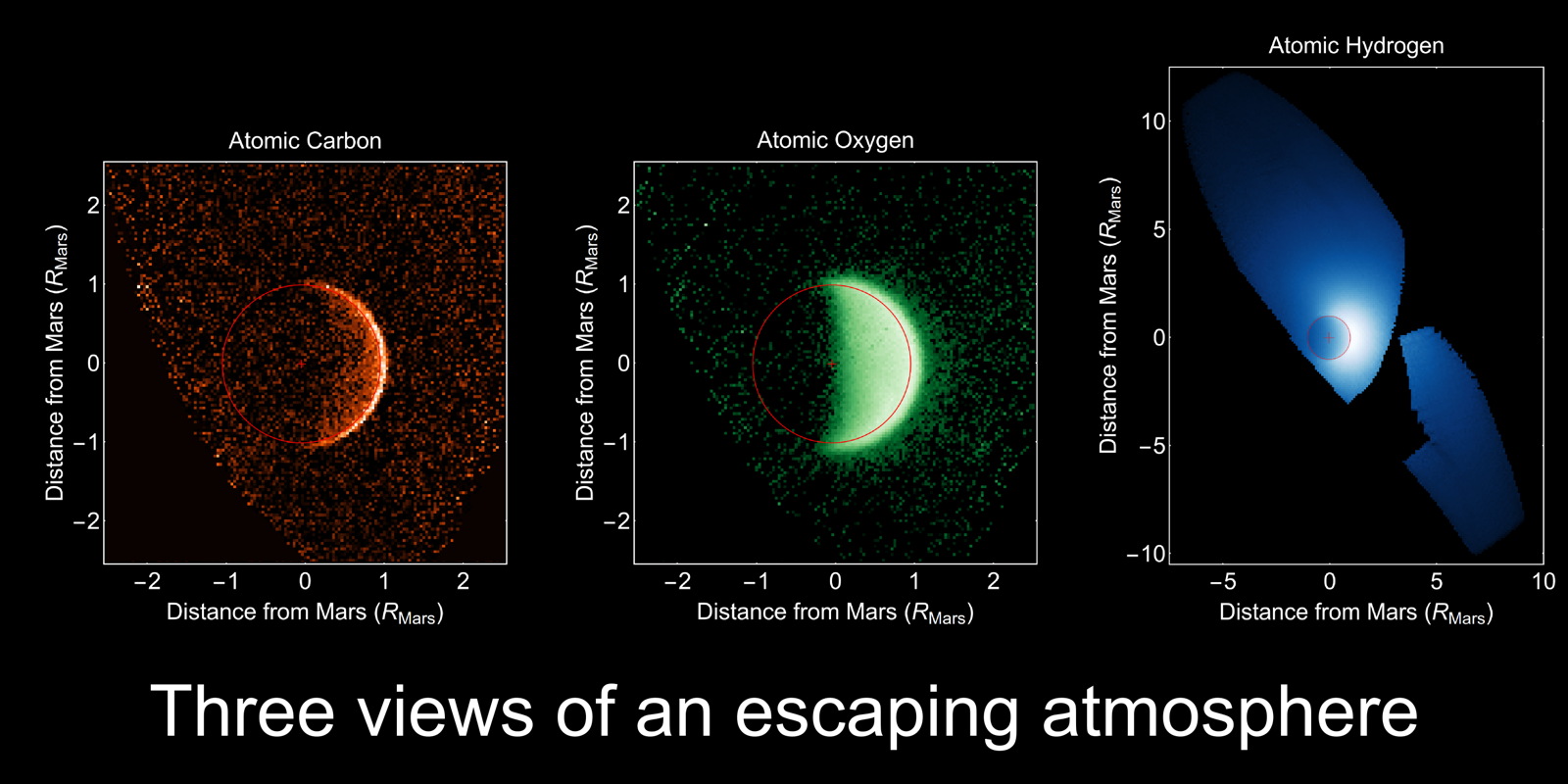
Three views of Mars' escaping atmosphere, obtained by MAVEN’s Imaging Ultraviolet Spectrograph.
Breaking space news, the latest updates on rocket launches, skywatching events and more!
Ozone in the Southern Hemisphere of Mars

This map shows the geographical distribution of ozone in the southern hemisphere of Mars, as observed by MAVEN’s Imaging Ultraviolet Spectrograph.
First SEP Event Observed by MAVEN at Mars
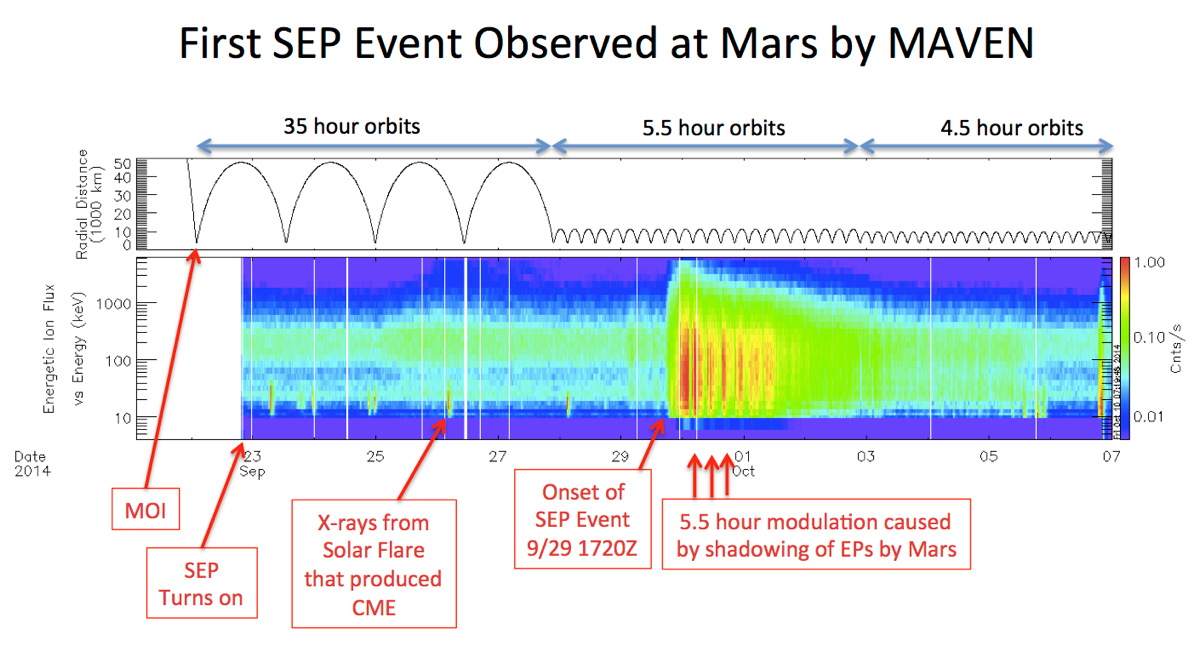
These graphs track the sequence of events leading up to the first SEP event observed by MAVEN spacecraft at Mars.
SOHO Coronagraph image Taken From Near Earth
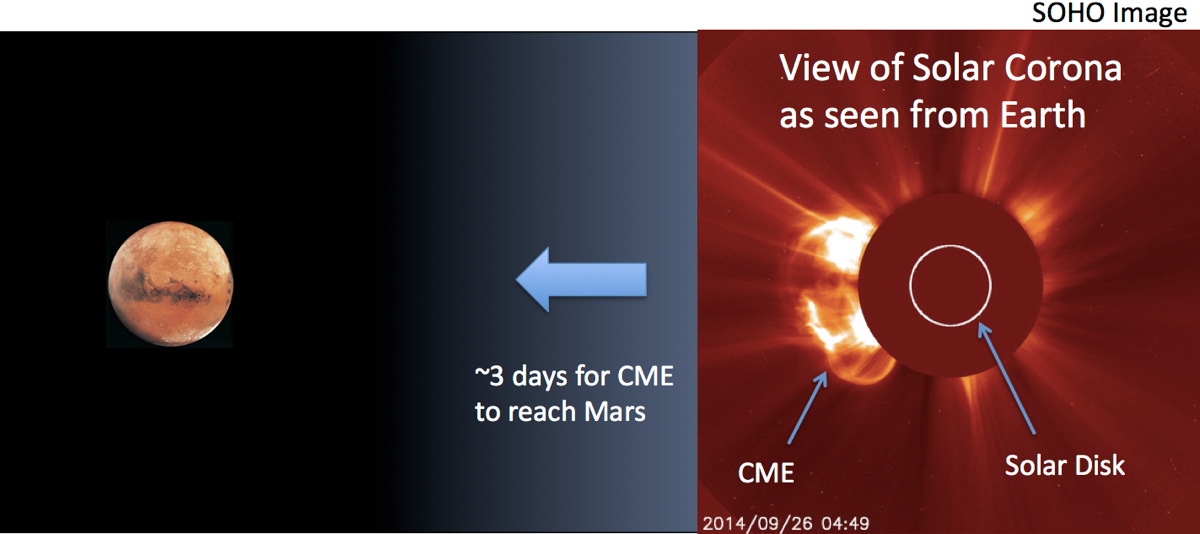
This coronagraph image was taken by SOHO spacecraft from a position near Earth. In this view, the CME is travelling to the left towards Mars.
Coronagraph Image Taken by STEREO Spacecraft
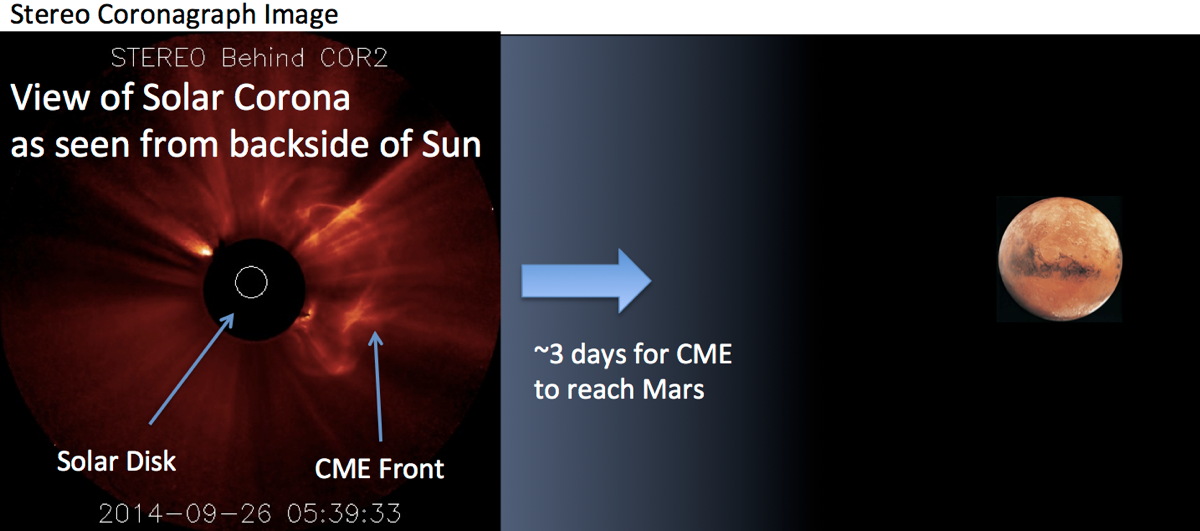
This coronagraph image was taken by STEREO spacecraft which is currently positioned on the far side of the sun. In this view, the CME is heading to the right towards Mars.
Join our Space Forums to keep talking space on the latest missions, night sky and more! And if you have a news tip, correction or comment, let us know at: community@space.com.

Space.com is the premier source of space exploration, innovation and astronomy news, chronicling (and celebrating) humanity's ongoing expansion across the final frontier. Originally founded in 1999, Space.com is, and always has been, the passion of writers and editors who are space fans and also trained journalists. Our current news team consists of Editor-in-Chief Tariq Malik; Editor Hanneke Weitering, Senior Space Writer Mike Wall; Senior Writer Meghan Bartels; Senior Writer Chelsea Gohd, Senior Writer Tereza Pultarova and Staff Writer Alexander Cox, focusing on e-commerce. Senior Producer Steve Spaleta oversees our space videos, with Diana Whitcroft as our Social Media Editor.
